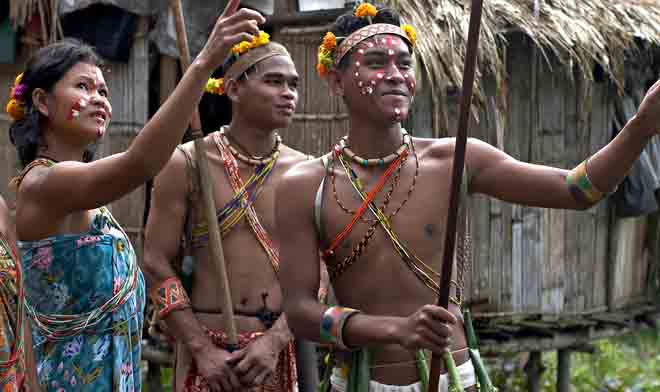Saumya Vatsa writes on “Rights of Indigenous Peoples”, for United Nations Human Rights Council.

History is not privy to the abject consequences that follow colonisation and oppression of masses in nations. While many countries have hence built their economies one corporate giant at a time, and are beginning to hold pride in being part of the “developed nations” club, the plight of the first occupants, or the Indigenous Peoples, of these nations, is still being fuelled at the hands of privilege.
There are 370 million indigenous people across more than 90 countries, constituting about 5% of the world’s population. They belong to more than 5,000 different indigenous peoples and speak more than 4000 languages. They are individuals with roots that go back to the time when their ancestors of ethnic origins first inhabited their country. Indigenous Peoples have strong associations with their surrounding natural resources and lands that they have inhabited for years and are practitioners of different cultural beliefs.
Indigenous peoples today, are inarguably among the most vulnerable groups of people in the world. Issues of brutality are widespread among indigenous people and various cases of intimidation and abuse by military forces have been observed. A citizen of an indigenous origin is more likely to be unnecessarily questioned by the police and most of these cases remain undocumented by the authorities. These instances of systemic racism are an outrageous violation of human rights. Criminalisation of protests regarding the violation of these rights is a serious shortcoming and the legislation is wrongly used in cases to penalize indigenous organisations merely for fighting for their rights.
The land ownership rights of Indigenous Peoples are recognised under international law, including the famous Aboriginal Land Rights (Northern Territory) Act, 1976 of Australia. According to the UN Declaration on the Rights of Indigenous Peoples adopted in September 2007, States “cannot relocate Indigenous Peoples without their free, prior and informed consent” and without offering them adequate compensation. The land inhabited by Indigenous Peoples covers up to 80% of our biodiversity and its natural resources, and agricultural yields are often eyed by government and private companies. These companies, drunk on influence, often lease, plunder, and pollute these lands. One such instance is the experience of the Sengwer peoples in Kenya. Kenya’s conservation policies have led to the Indigenous Peoples’ forceful eviction from their homes in the forests without any assurance of resettlement. Conservation of bio-diversity is cited as a reason for this unjust alienation of human rights and their attempt to return to their lands is futile as they are arrested or even killed by “bio-guards”.
Women and children of indigenous origin are subjected to a plethora of shortcomings and deprivation of basic health facilities due to negligence and treatment as second-class citizens. An indigenous woman is more likely to be raped and statistics show that more than one in three indigenous women are raped during their lifetime. In a shocking incident in October 2015 in Bastar region of Chattisgarh, India, 16 Adivasi women, including three teenage girls and a pregnant woman, were sexually assaulted by the state police personnel followed by looting of property. From India to Peru, indigenous women have higher rates of maternal mortality, teenage pregnancy, and sexually transmitted diseases. In an unfortunate case in the 1990s, more than 2000 indigenous Campesino women were sterilized without prior consent by authorities in Peru. In January 2014, the case was declared closed and injustice prevailed. When it comes to the education of indigenous children, their own teachings are devalued and many of the parents unwillingly encourage their children to not speak in their mother tongue lest they are ostracized and harassed by fellow students and teachers, that is, if at all these children get access to affordable education.
The UN Declaration on the Rights of Indigenous Peoples considers individual rights, and rights to education, health, employment, language, and others. As an attempt to encourage their right to practice their language (with reports from The United Nations Permanent Forum of Indigenous Issues estimating that one indigenous language dies every two weeks), the theme of this year’s commemoration of International Day of the World’s Indigenous Peoples, recognized every year on 9 August, was Indigenous Languages. The Declaration strongly discourages discrimination against indigenous peoples and promotes their participation in all matters that concern them. It also ensures their right to pursue their own priorities in economic, social and cultural development. “Transforming Our World: the 2030 Agenda for Sustainable Development” refers to indigenous peoples with special emphasis on Goal 2 on Zero Hunger and Goal 4 on education, and calls for the participation of indigenous people.
Despite efforts over the last few decades by the UN, other bodies as well as indigenous rights’ activists to improve living conditions and to increase recognition of indigenous rights through law and order, and dialogue, the rights of indigenous people have not been realized in their entirety. It is necessary to establish mechanisms for safeguarding the interests, and more important the habitat of the First Peoples as it is difficult for them to pursue education, and healthcare if their lands are not secure.